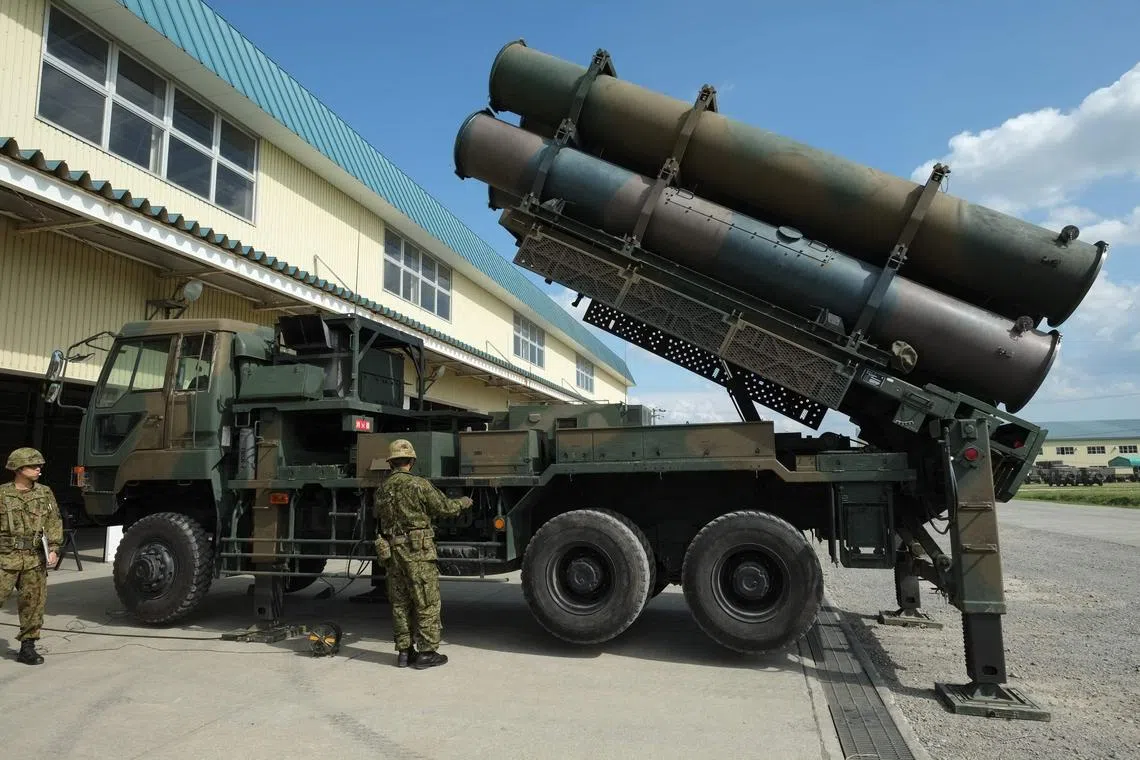Japan enacts sweeping changes to defence policy
Sign up now: Get insights on Asia's fast-moving developments

Japan said on Friday it would begin a once-unthinkable US$320 billion (S$438.18 billion) military build-up.
PHOTO: AFP
Follow topic:
TOKYO – Japanese Prime Minister Fumio Kishida’s Cabinet signed off on the country’s most radical overhaul of its defence policy since World War II
Counterstrike capability
Japan will acquire so-called “counterstrike capabilities” that will enable its Self-Defence Forces to strike enemy bases. This will be permissible under these conditions:
An attack on Japan or its like-minded partners that poses a threat to Japan’s own survival.
There are no other appropriate means to repel an imminent attack.
The use of force can be kept to a minimum.
Japan intends to develop its own arsenal of hypersonic missiles and buy as many as 500 US-made Tomahawk cruise missiles with a range of over 1,250km.
Defence spending
Japan will ramp up military spending to 43 trillion yen (S$426.6 billion) for the next five years, making it the third-largest spender after the United States and China on current budgets.
This will bring the defence budget to 2 per cent of gross domestic product (GDP), eclipsing the self-imposed spending limit of 1 per cent of GDP that has been in place since 1976.
Military restructuring
Japan will establish its first joint command centre to better coordinate its ground, maritime and air self-defence forces under contingency situations.
In recognition of “grey-zone” tactics that involve non-military activities, Japan will also expand its cyber defence unit to about 4,000 personnel – more than four times the current size – to stave off cyber attacks, and launch a new unit to deal with “information warfare”.
The coast guard will likewise be strengthened to cope with territorial incursions around Japan’s waters.


